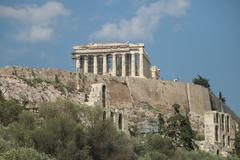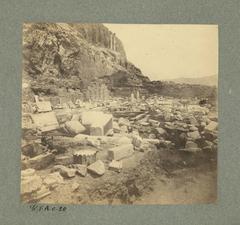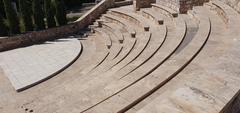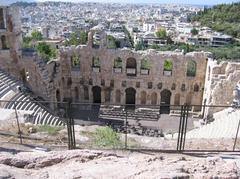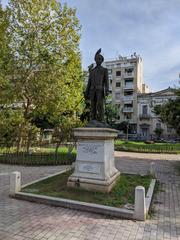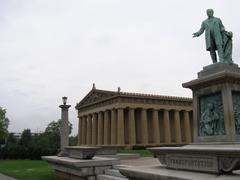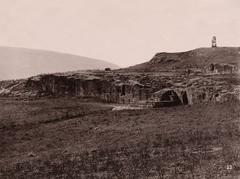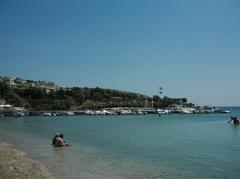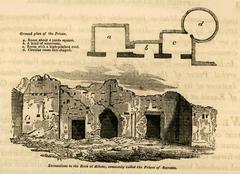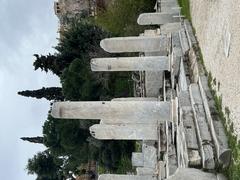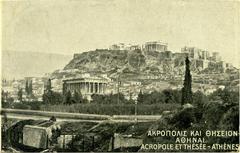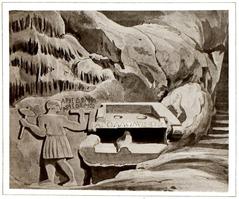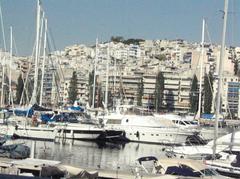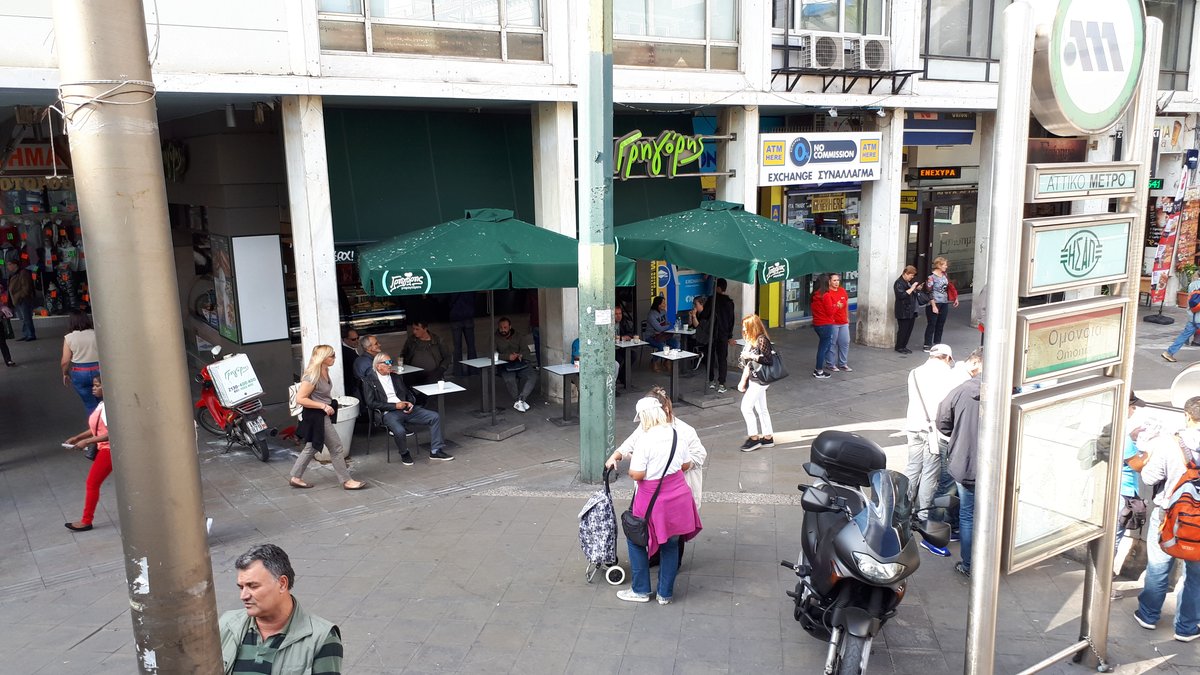
Visiting Hours, Tickets, and Historical Sites of Πλατεία Ομονοίας in Piraeus, Greece
Date: 31/07/2024
Introduction
Omonoia Square, known as Πλατεία Ομονοίας, is one of Athens’ most iconic landmarks, steeped in history and cultural significance. Since its initial design in 1834 by architects Kleanthi and Saubert, the square has undergone numerous transformations, symbolizing Greece’s evolving political and social landscape (Wikipedia). Initially intended as the site for a royal palace and named Πλατεία Ανακτόρων (Palace Square), the square was later renamed Πλατεία Όθωνος (Otto Square) after King Otto, and finally adopted its current name, Omonoia Square, in 1862 to represent unity and reconciliation (Gargalianoionline). Over the years, Omonoia Square has become a vibrant social, commercial, and cultural hub, hosting political rallies, sporting celebrations, and various public gatherings. Its strategic location in central Athens makes it easily accessible and an essential part of the city’s daily life. This comprehensive guide aims to provide visitors with all the necessary information to make the most of their visit to Omonoia Square, including its rich historical background, practical travel tips, and highlights of nearby attractions.
Table of Contents
- [Exploring Omonoia Square: History, Visiting Hours, Tickets & More](#exploring-omonoia-square-history-visiting-hours-tickets—moreexploring-omonoia-square-history-visiting-hours-tickets-more)
- [Introduction](#introductionintroduction)
- [History of Omonoia Square](#history-of-omonoia-squarehistory-of-omonoia-square)
- [Early Beginnings and Initial Design](#early-beginnings-and-initial-designearly-beginnings-and-initial-design)
- [Name Changes and Political Significance](#name-changes-and-political-significancename-changes-and-political-significance)
- [Architectural Evolution](#architectural-evolutionarchitectural-evolution)
- [Visiting Omonoia Square](#visiting-omonoia-squarevisiting-omonoia-square)
- [Visiting Hours and Tickets](#visiting-hours-and-ticketsvisiting-hours-and-tickets)
- [Travel Tips](#travel-tipstravel-tips)
- [Special Events and Social Impact](#special-events-and-social-impactspecial-events-and-social-impact)
- [Architectural Highlights](#architectural-highlightsarchitectural-highlights)
- [Notable Landmarks](#notable-landmarksnotable-landmarks)
- [Recent Renovations and Current Status](#recent-renovations-and-current-statusrecent-renovations-and-current-status)
- [Guided Tours and Photographic Spots](#guided-tours-and-photographic-spotsguided-tours-and-photographic-spots)
- [FAQ Section](#faq-sectionfaq-section)
- [Conclusion](#conclusionconclusion)
Exploring Omonoia Square: History, Visiting Hours, Tickets & More
Introduction
Omonoia Square (Πλατεία Ομονοίας) is not only one of the oldest squares in Athens, Greece, but also a significant historical and social landmark. This comprehensive guide will delve into its rich history, provide practical visitor information, and highlight why it remains a must-visit destination in Athens.
History of Omonoia Square
Early Beginnings and Initial Design
Omonoia Square, originally named ‘Πλατεία Ανακτόρων’ (Palace Square), was constructed in 1846 with the intention of being the site for the royal palace, designed by architects Stamatios Kleanthis and Eduard Schaubert (Wikipedia). Although the palace was built elsewhere, the square has undergone several redesigns and name changes since its inception.
Name Changes and Political Significance
The square was renamed ‘Πλατεία Όθωνος’ (Othonos Square) in honor of King Otto, Greece’s first king. However, after King Otto was dethroned in 1862, it was renamed ‘Πλατεία Ομονοίας’ (Omonoia Square) to symbolize the oath of peace (omonia) taken by opposing political leaders to end hostilities (Wikipedia).
Architectural Evolution
In the late 19th century, trees were planted and a polygonal platform was installed at the center of the square. Lighting systems were introduced, making it a vibrant social hub (Gargalianoionline).
Visiting Omonoia Square
Visiting Hours and Tickets
Omonoia Square is open 24/7 and is free to visit, making it accessible at any time. There is no ticket required to explore the square itself, but nearby attractions may have their own visiting hours and ticketing arrangements.
Travel Tips
- Best Time to Visit: Early morning or late evening for a more relaxed experience.
- How to Get There: Easily accessible by metro, bus, or on foot from central Athens.
- Nearby Attractions: The National Archaeological Museum, Monastiraki Flea Market, and the historic district of Plaka.
Special Events and Social Impact
Omonoia Square has hosted numerous events, from political rallies to sporting celebrations, such as Greece’s victory in the EuroBasket 2005 finals and Euro 2004 football tournament. The square’s central location and role as a transportation hub make it a vital part of Athens’ daily life.
Architectural Highlights
Notable Landmarks
Two iconic buildings around Omonoia Square are the neoclassical hotels, ‘Bagkeion’ and ‘Megas Alexandros’, located on either side of Athinas Street. These landmarks are remnants of the square’s historical grandeur (Wikipedia).
Recent Renovations and Current Status
The square has seen numerous renovation efforts, the most recent completed in 2020, which included the reinstallation of its iconic fountain. This renovation aimed to restore the square’s historical significance and aesthetic appeal (Wikipedia).
Guided Tours and Photographic Spots
Several guided tours include Omonoia Square as part of their itinerary, offering insights into its history and significance. The newly renovated fountain and historical buildings provide excellent photographic opportunities.
FAQ Section
Q: What are the opening hours for Omonoia Square?
A: Omonoia Square is open 24/7.
Q: Is there an entry fee to visit Omonoia Square?
A: No, it is free to visit.
Q: What are some nearby attractions?
A: The National Archaeological Museum, Monastiraki Flea Market, and Plaka.
Q: Are there guided tours available?
A: Yes, several guided tours include Omonoia Square in their itinerary.
Conclusion
Omonoia Square remains a central and significant part of Athens, offering a rich historical narrative, architectural beauty, and vibrant social dynamics. Whether you’re a history buff or simply looking to explore Athens, Omonoia Square is a must-visit. For more travel tips and updates, follow us on social media or download our mobile app Audiala.
References
- Wikipedia. (n.d.). Omonoia Square. Retrieved from Wikipedia
- Gargalianoionline. (n.d.). Οι περιπέτειες μιας πλατείας: η Ομόνοια. Retrieved from Gargalianoionline
- in.gr. (2019, October 14). Omonoia: The history of Athens’ oldest square. Retrieved from in.gr
- Athens Insider. (n.d.). A tale of two squares: Omonoia and Syntagma. Retrieved from Athens Insider
- Lonely Planet. (n.d.). A perfect day in Piraeus, Athens. Retrieved from Lonely Planet
- Flannels or Flip Flops. (n.d.). Piraeus Greece Port. Retrieved from Flannels or Flip Flops
- The Points Guy. (n.d.). Things to know before visiting Greece. Retrieved from The Points Guy

